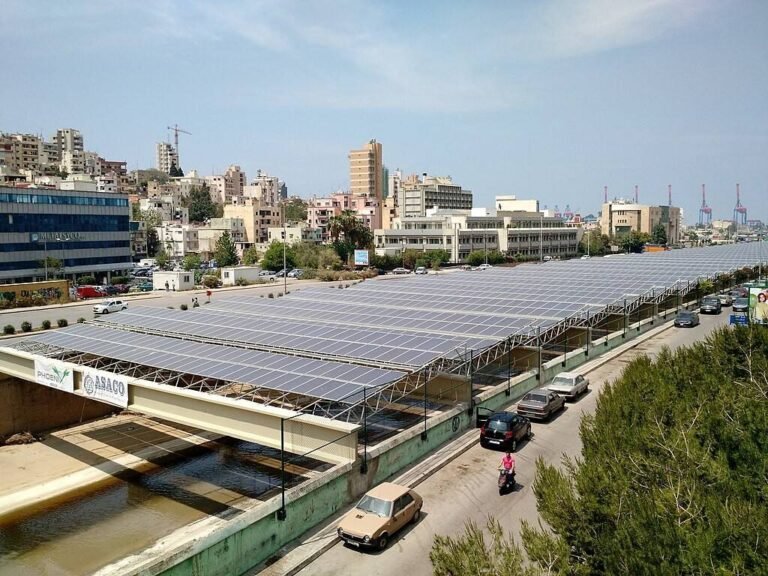Algae Biofuel Startup Claims Major Emissions Cut
A small group of startups and researchers say algae could be a fast route out of fossil fuels — even to the point of delivering net-negative carbon when the whole process is counted. One UK firm recently announced the results of an independent life-cycle assessment (LCA), which showed that its algae oil removes more greenhouse gases than it emits. If true at scale, that would be big news for shipping, aviation and heavy industry, where batteries struggle. However, experts and past research warn that the picture is complex: results vary significantly depending on where algae are grown, the energy sources and nutrients used, and how researchers account for credits from co-products. According to CleanTechnica, the LCA for the startup HutanBio — performed by EcoAct — concluded the company’s process can remove up to 1.48 metric tons of CO₂-equivalent in the best regional scenarios.

Evidence and the Science Behind the Claim
Algae are attractive because they photosynthesise quickly, can grow on salty or waste water, and sometimes thrive on non-arable land. That makes them an appealing feedstock for drop-in fuels such as biodiesel or hydrotreated oils for ships and planes. But whether algae fuel actually lowers emissions depends on the whole life cycle — from making the reactors and pumps, to supplying CO₂ and nutrients, to harvesting, drying and upgrading the biomass into fuel.
Large, careful assessments show wide spreads in outcomes. A global life-cycle and techno-economic assessment published in Environmental Science & Technology modelled thousands of locations and found that in high-productivity, low-carbon-electricity regions, well-to-wheels greenhouse-gas footprints could be as low as about 31–45 g CO₂e per MJ — a level that competes well with fossil fuels in certain places. Those same authors show results rise when electricity is fossil-heavy or when land-use impacts are included.
The U.S. National Renewable Energy Laboratory (NREL) has also produced a thorough harmonisation study that maps how sensitivity to electricity source, CO₂ supply, nutrient recycling and coproduct accounting drives results. NREL’s work finds that some scenarios can approach low or even net-negative life-cycle emissions — but only under specific assumptions such as access to low-cost, zero-carbon electricity and the ability to recycle carbon and nutrients from conversion processes. The report stresses that capital and operational details — which many early studies leave out — meaningfully change outcomes.
The HutanBio example illustrates both the promise and the caution. The company’s EcoAct LCA found net-negative results in selected sun-rich regions where renewable power and co-location with industrial CO₂ sources exist. EcoAct’s assessment, as reported, highlights renewable electricity as a key lever: switching from fossil grid power to renewables cuts production emissions by multiple factors in their scenarios. But the assessment — like most LCAs — depends on boundary choices (what’s included or excluded), and the company’s public statements note the study did not include downstream user emissions (Scope 4).
From Event Organisers to Oceanographers — why Everyday Buyers and Top Scientists Remain Sceptical of Algae-Based Carbon Claims
This field has repeatedly produced headline claims followed by caution from the scientific community. A recent, separate example is Gigablue — a startup that sold large volumes of ocean carbon credits on the basis of a particle-driven algae scheme — which prompted strong questions from ocean scientists. The Associated Press reported that Gigablue sold 200,000 ocean-based credits, while many ocean ecologists said the company had not released enough data to support its sequestration claims. Scientists, including oceanographers Thomas Kiørboe and Philip Boyd, said they were sceptical that phytoplankton would reliably colonise the particles or that the carbon would stay locked away rather than being re-mineralised or eaten. That episode is a reminder that commercial deals can leap ahead of peer-reviewed data and regulatory checks.
There are also constructive, on-the-ground stories: event organiser Jimmy Pallas paid for Gigablue credits because he wanted to act quickly and said it was one part of a larger plan to cut emissions from his events. Investors and governments, including the U.S. Department of Energy, are funding mixed-algae research precisely because the science is promising if the tough engineering and accounting problems are solved. In late 2024, DOE awarded $20.2 million to university and industry projects to improve algae conversion pathways and build supply chains for low-carbon fuels and bioproducts — a sign that public agencies see plausible routes to impact but expect more rigorous development.
Experts who study life-cycle impacts often highlight three recurring factors that determine whether an algae project appears to be a climate solution or a liability. These are: (1) the carbon source and how it is counted (for example, industrial CO₂ streams versus captured air), (2) the electricity mix used for cultivation and processing, and (3) the way coproducts — such as protein for animal feed — are credited or allocated. When renewable energy is abundant and coproducts displace emissions-intensive goods, algae systems perform much better on paper. But when electricity grids rely heavily on fossil fuels or nutrient inputs are highly energy-intensive, the climate benefits weaken. Studies by NREL and other harmonisation efforts make this clear.

What this Means for Policy, Buyers and Investors — and What to Watch Next
If an algae company can honestly show net-negative life-cycle emissions at scale, the implications are meaningful: shipping and aviation regulators, corporate buyers and fuel standard programmes could have a low-carbon liquid option for hard-to-electrify sectors. But that claim must survive independent, transparent scrutiny, steady field data, and replicable results in multiple geographies.
For buyers and policymakers, three practical checks make sense now. First, demand full LCA transparency: insist on published methodology, system boundaries, and sensitivity runs that show how results change with grid mix, CO₂ source, and coproduct value. Second, require third-party verification and, where possible, peer-reviewed field data rather than only vendor tests. Registries and standards are improving for ocean and bio-based credits, but the Gigablue example shows how fast commercial markets can outpace scientific validation. Third, prefer projects that demonstrate durable sequestration pathways or credible substitution credits (for coproducts) rather than relying on speculative ocean removal or opaque offsets. The U.S. government’s funding of mixed algae projects suggests a pathway where public research helps settle these questions before large-scale commercial rollouts.
For engineers and researchers: publish raw field measurements (growth rates, harvest yields, loss rates during sinking or transport, energy consumption for dewatering) and put them in open supplementary materials so others can reproduce LCAs. For investors: look for companies that can show regional techno-economic and LCA scenarios (not a single “best case”) and that can match low-carbon power, secure sustainable nutrient flows, and credible monitoring systems.
The science points to real potential, but only under specific conditions. Large, well-designed studies show that algae fuels can be low-carbon, or even net-negative, in high-productivity regions with clean electricity. At the same time, startups that promise dramatic removals without transparent data draw understandable scepticism from researchers. The way forward is public, rigorous, and incremental: test, publish, verify, scale.
Actionable advice
If you are a corporate buyer, regulator, or investor considering algae-based fuels or credits today, ask for these concrete items before you commit funds or make public claims: (1) the full LCA report with assumptions and sensitivity analyses; (2) raw field data and monitoring plans for at least two independent pilot sites; (3) third-party verification plans tied to measurable outcomes; and (4) contingency plans showing how the project performs if grid electricity is not fully renewable or if nutrient recycling underperforms. When those pieces are public and repeatable, market confidence will follow — and the promise of algae will move from “possible” to “practical.”







